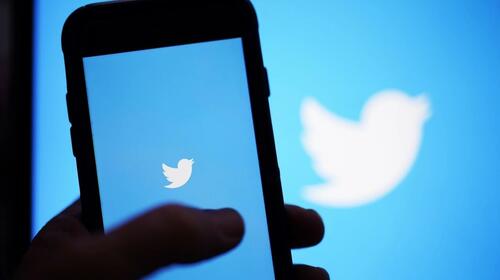Would Eliminating Bots Really Fix Twitter?
Authored by Kalev Leetaru via RealClear Politics,
Earlier this year, Elon Musk created shock waves with his unsolicited offer to purchase Twitter, arguing that the social media platform plays an existential role in promoting democracy and freedom across the world. Yet in subsequent months, he has attempted to scuttle the deal, claiming the platform is so filled with bots and spam accounts that it is not worth the $44 billion purchase price. A closer look at the numbers suggests that Twitter’s problems are far deeper than bots – and even if the company managed to entirely eliminate them, doing so would not slow its degeneration into a stagnating echo chamber.
Since reaching its peak of 500 million daily tweets in August 2013, Twitter has been a platform in decline. By November 2018, the platform was seeing just 320 million daily tweets. The pandemic lockdowns that forced the world online proved a boon, helping the platform to once more reach 500 million daily tweets. Just months later, Twitter gave up all of those gains when its efforts to combat election misinformation spectacularly backfired. Daily usage has languished ever since, with even the prospect of Musk’s ownership failing to resurrect the platform’s fortunes.
In Musk’s telling, automated user accounts known as “bots” are at the root of Twitter’s ills. While the company estimates that less than 5% of all accounts are automated, Musk believes the number to be far higher, with some industry estimates putting it at 15% or more.
Some automated accounts perform useful tasks, such as automatically tweeting alerts about earthquakes or answering basic questions. On the other hand, bot accounts have also been used to attempt to influence elections, promote financial fraud, and amplify falsehoods.
While Musk has not produced an exhaustive list of the ways in which he believes bots harm Twitter’s ecosystem, he has cited the use of bots to influence public opinion and entrench echo chambers as problematic. While it is certainly true that bots have been used for such campaigns, to what degree do they systematically deviate from overall conversational behavior on the platform?
A decade ago, just 20% of tweets were retweets, meaning Twitter was largely a place to go to hear from the world. Today more than half of everything posted to Twitter each day is a retweet, and as much as 10% of all daily posts are retweets of and posts by the 0.4% of users with “verified” accounts.
If bots were the driving force behind Twitter’s echo chambers, one would expect to see a small number of users accounting for an outsize fraction of daily retweets. Instead, there is nearly a 1:1 ratio of daily retweets and distinct user accounts sending those retweets, meaning that retweeting is an entrenched behavior seen across all of Twitter’s users.
Similarly, 75% of tweets today mention another user, while just 25% are in the form of a reply to another user – indicative of a place where people come to shout at one another rather than converse. As with retweets, these behaviors are fairly evenly distributed across Twitter’s entire user base, rather than concentrated among a small set of users – as might be expected if bots were driving these behaviors.
On the other hand, examining the median age of all accounts that tweet each day, the platform began experiencing heavy churn (users joining and then quickly leaving) in 2018, at around the time that retweeting stopped linearly increasing. One possible explanation for this is increased anti-bot enforcement by Twitter that forced bot operators to constantly register new accounts as their old ones were deleted. If true, this would suggest that bots are sufficiently entrenched on the platform that aggressively deleting them had an existential impact at the level of Twitter itself. At the same time, most other major metrics, from user mentions to hashtag use, remained unchanged, suggesting that even if this was a bot purge, their impact on the platform is limited.
Rather than bots driving the conversation on Twitter, it is the verified accounts of politicians, journalists, academics, and other celebrities like Musk that seed the echo chambers he so despises.
Are Twitter bots a relatively minor nuisance, or do they existentially shape what people talk about on the platform? Anecdotal evidence suggests some potential connection between increased user churn and decreased retweeting, but this could simply reflect changing usage patterns from new users, rather than a mass-scale bot purge. Similarly, retweeting is evenly distributed across users, rather than centralized in a small cadre of bot-like accounts, suggesting that echo chambers are a native feature of Twitter’s evolution, rather than an antisocial behavior foisted on it by automated robots. The end result is that while we can’t say definitively what percentage of Twitter users are bots, it is clear that simply purging the platform of bots won’t fix its most existential issues, from echo chambers to a stagnating user base.
RealClear Media Fellow Kalev Leetaru is a senior fellow at the George Washington University Center for Cyber & Homeland Security. His past roles include fellow in residence at Georgetown University’s Edmund A. Walsh School of Foreign Service and member of the World Economic Forum’s Global Agenda Council on the Future of Government.
Tyler Durden
Mon, 08/01/2022 – 20:20
via ZeroHedge News https://ift.tt/f3pjRhs Tyler Durden
